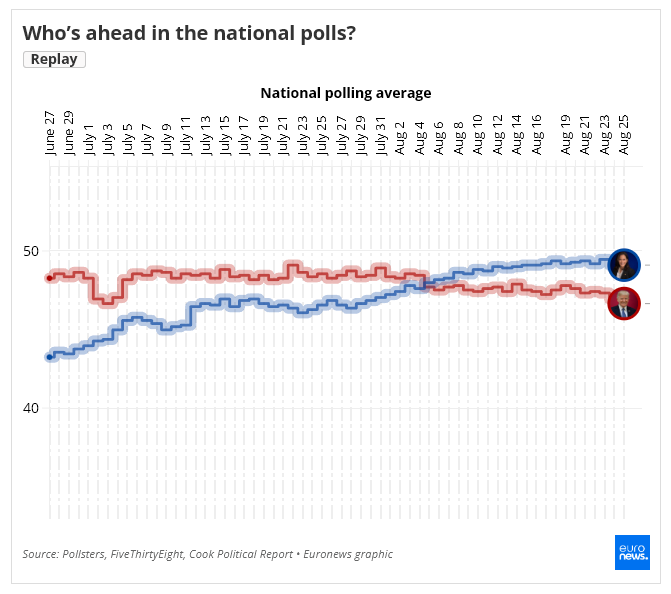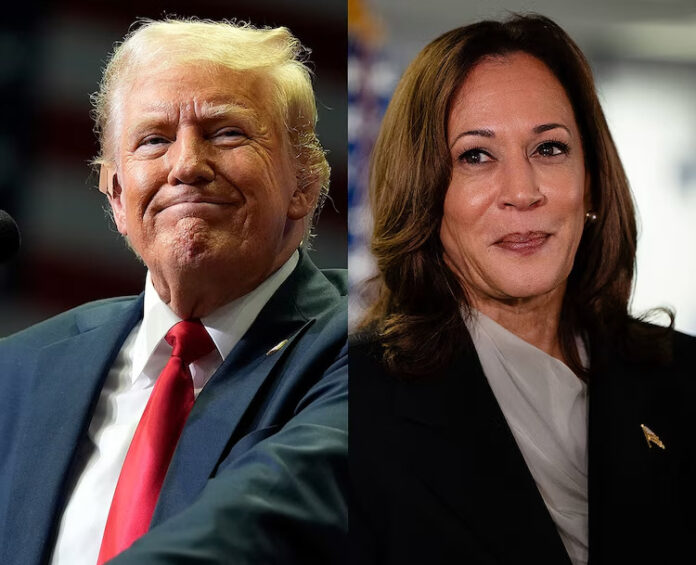In a move that reshaped the political landscape, Biden threw his support behind Vice President Kamala Harris, setting the stage for a high-stakes contest between Harris and former President Donald Trump. At the Democratic National Convention held in Chicago last week, Harris was officially nominated as the Democratic candidate, with Minnesota Governor Tim Walz chosen as her running mate.

Now, Harris and Walz find themselves in a tight battle with Trump and his vice-presidential pick, JD Vance. The race is neck and neck, with national polling averages and historical data showing a recent surge of support for Harris. This shift comes with just over two months left for the candidates to solidify their voter bases, particularly in key battleground states.
Polling trends reveal that since Biden’s exit, Harris has been able to recover lost ground for the Democrats. By August, she took the lead in the polls for the first time, despite the prevailing belief among some analysts that an assassination attempt on Trump in mid-July had all but secured his victory.
Harris’ position improved further as her choice of Walz, initially considered an unexpected and relatively unknown figure, gained traction among her supporters. On the other hand, Trump’s campaign has faced significant backlash due to its hardline conservative rhetoric and the influence of Project 2025, a far-right initiative viewed by some as a threat to the government’s democratic checks and balances.

JD Vance, Trump’s running mate, has also faced criticism for his lackluster public appearances, which has added to the challenges facing the Republican campaign. Even after independent candidate Robert F. Kennedy Jr. dropped out of the race and endorsed Trump, the expected surge in support for the Republican ticket has not materialized in the polls.
As it stands, the race remains too close to call, with polling margins falling within the margin of error, leaving the outcome uncertain.

























